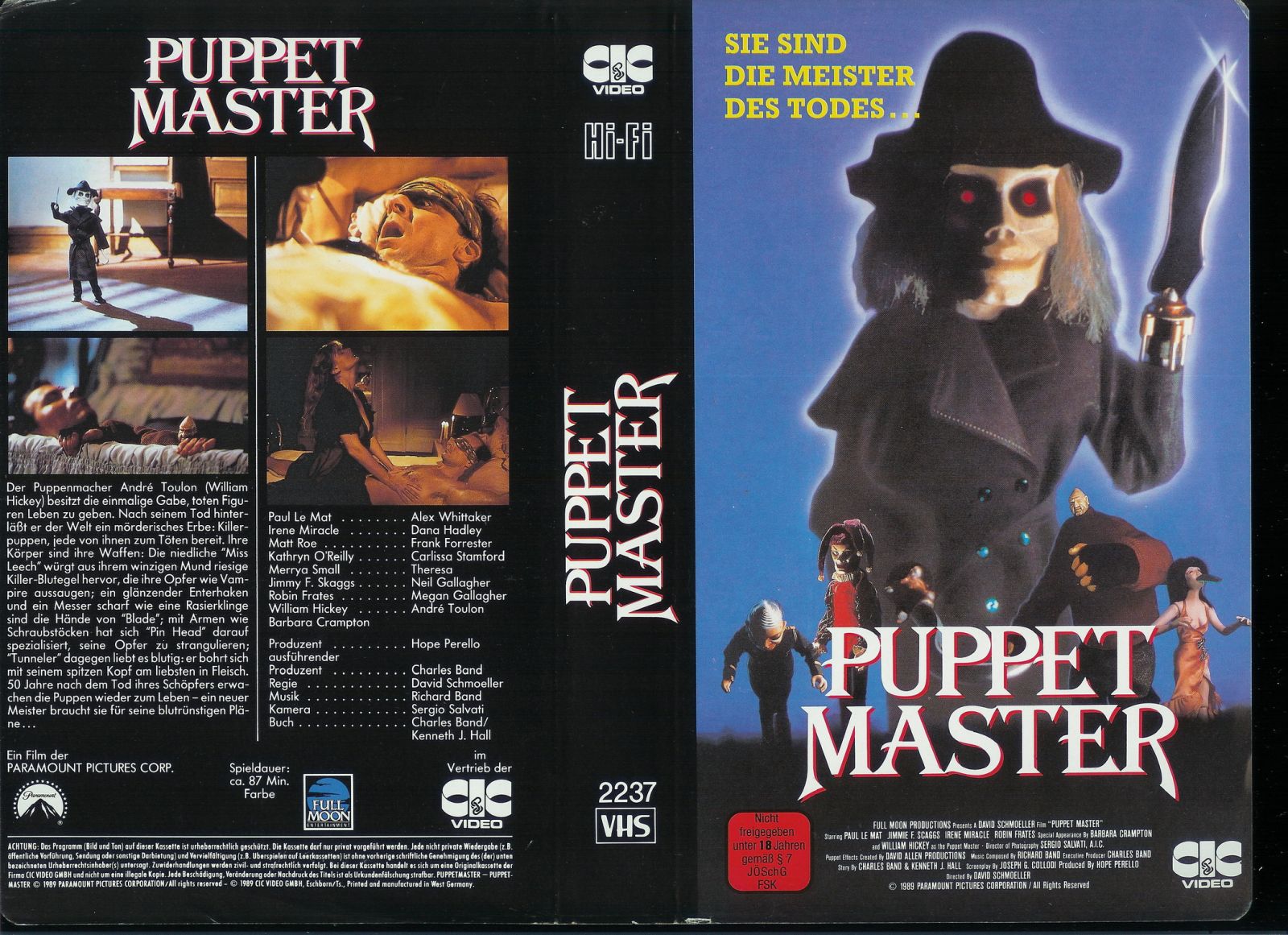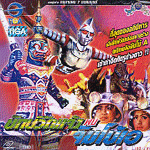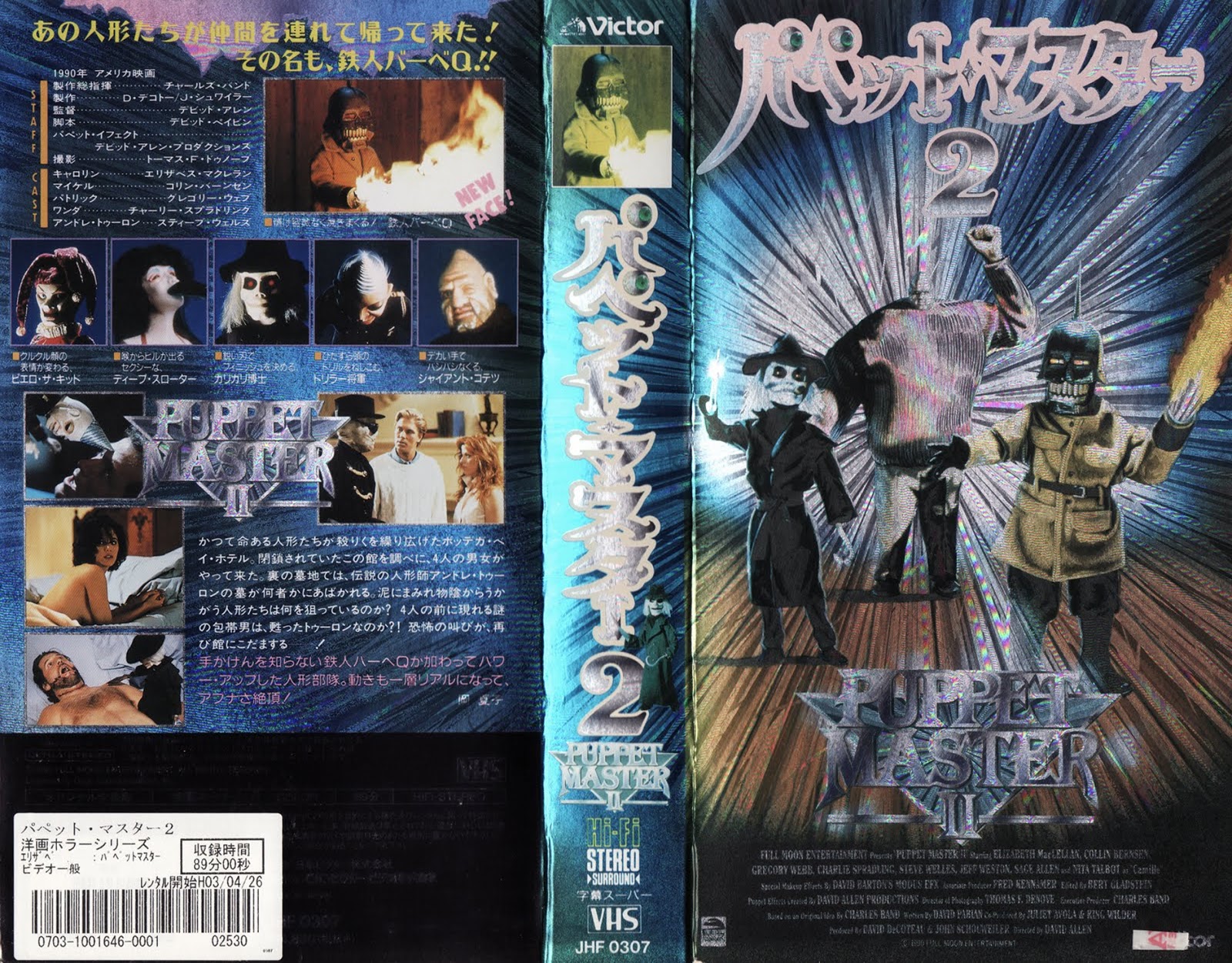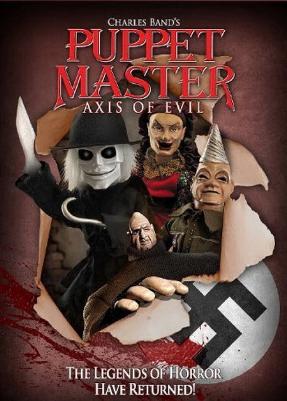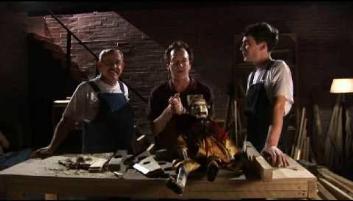Director: Hal Sutherland
Writer: Robby London, Barry O’Brien, Dennis O’Flaherty
Producer: Lou Scheimer
Cast: Scott Grimes, Tom Bosley, Jonathan Harris
Country: USA
Year of release: 1987
Reviewed from: UK VHS
One always approaches with trepidation an old non-Disney animated feature, especially when it is an original sequel to a classic tale already filmed to great acclaim by the House of Mouse. Anyone who has ever suffered through Happily Ever After will know how bad such things can be. Which is why I was pleasantly surprised by this 1987 picture which features an engaging story, likeable characters, some genuine tension and horror, reasonable songs and some frankly terrific animation.
The story kicks off with Pinocchio (Scott Grimes: Critters I and II, Band of Brothers, American Dad) celebrating his first birthday - that is, the first anniversary of his becoming a real boy - when he is visited by his fairy godmother, referred to as such or as ‘the Good Fairy’ but never ‘the Blue Fairy’, despite her hue (she is voiced by singer Rickie Lee Jones). She reminds him that freedom, especially freedom of choice, is the most important thing, which I suppose ties in with the idea of not being somebody’s puppet. Geppetto (Happy Days star Tom Bosley, who played the same character in the 1985 Italian animated series The Adventures of Pinocchio and returned to the role in 2005 for the computer-animated prequel Geppetto’s Secret) has manufactured a beautiful jewel box for the local mayor, for a price of ten gold pieces, and gives his son the responsibility of delivering it.
![]() But along the way, Pinocchio encounters con-artist ‘Professor Scalawag’ (Ed Asner, whose innumerable other voice credits include Gargoyles, Recess, Freakazoid!, Fish Police, Spider-Man, Olive the Other Reindeer and assorted Star Wars video games), a smooth-talking racoon with a monkey sidekick of indeterminate Middle Eastern origin named Igor (ubiquitous voice legend Frank Welker). These two effectively fulfil the fox/cat roles from the original story - unscrupulous and untrustworthy but not actually evil - and they persuade the boy to swap the jewel box for a large, fake ruby. Back home, Pinocchio is ashamed to have failed his father and resolves to avoid any repetition by running away.
But along the way, Pinocchio encounters con-artist ‘Professor Scalawag’ (Ed Asner, whose innumerable other voice credits include Gargoyles, Recess, Freakazoid!, Fish Police, Spider-Man, Olive the Other Reindeer and assorted Star Wars video games), a smooth-talking racoon with a monkey sidekick of indeterminate Middle Eastern origin named Igor (ubiquitous voice legend Frank Welker). These two effectively fulfil the fox/cat roles from the original story - unscrupulous and untrustworthy but not actually evil - and they persuade the boy to swap the jewel box for a large, fake ruby. Back home, Pinocchio is ashamed to have failed his father and resolves to avoid any repetition by running away.
He makes his way to a nearby travelling carnival which we saw, in a prologue, disembarking from a spooky-looking ship and setting itself up using dark magic. There he sees a pretty blonde puppet named Twinkle (Lana Beeson, whose recorded credits are limited to this film, the original All Dogs Go to Heaven, a He-Man/She-Ra Christmas Special and a 1985 TV version of Alice in Wonderland). Staying to the end of the show he is approached by the looming puppet master, Puppetino (William Windom: Escape from the Planet of the Apes, Children of the Corn IV), who somehow magically transforms Pinocchio back into a puppet and adds him to his collection.
Although Pinocchio escapes from Puppetino, he is forced to return, accompanied by Scalawag and Igor, to retrieve the jewel box which the two con-merchants had sold to the carnival proprietor. The carnival having upped sticks, they travel down the river in a small paddle-steamer and are eventually swallowed by the carnival’s dark steamer in a scene which evokes at one and the same time the tanker from Thunderball and the whale from the original Carlo Collodi story.
Inside, the puppet-turned-boy is introduced to ‘the land where dreams come true’, a place where children have unlimited toys and, in a particularly disturbing sequence, unlimited booze (it is never explicitly stated that the drink is alcoholic, but it leaves Pinocchio’s vision blurred and distorted). After living out his dream as a star (Scalawag and Igor drag up as dancing girls in an effort to rescue their friend), Pinocchio comes face to face with the towering Emperor of the Night, a huge, four-armed demon voiced by - who else? - James Earl Jones, who is apparently the Good Fairy’s nemesis. Every time someone gives up their freedom, the Good Fairy grows a little weaker and the Emperor grows a little stronger. He has, it turns out, captured Geppetto and shrunk him to bug size.
As it happens, a couple of real bugs are on Pinocchio’s trail in a subplot that fits neatly into the main one. Willikers (voiced by Mayberry’s finest, Don Knotts, who more recently added his vocal talents to Chicken Little) is a ‘glow-bug’, carved from wood by Pinocchio and given life by the Good Fairy as a birthday present to the boy. He is the equivalent of, maybe even a lampoon of, Jiminy Cricket who was of course a Disney invention. Willikers (who takes his name from Pinocchio’s expression of surprise, “Gee willikers!”) has teamed up with Lieutenant Grumblebee, a bluff-talking RAF-type bee, complete with flying helmet, handlebar moustache and devotion to his duties as a member of the ‘Royal Air Bugs’. Grumblebee is voiced, with impeccable English accent, by Dr Smith himself, Jonathan Harris.
The characters - good, bad and uncertain - all come together at the climax when the Emperor is defeated by Pinocchio’s realisation that he has the freedom to choose, leading to an exciting escape from the ship which goes into a meltdown remarkably similar to the one that Godzilla experienced a few years later! I’m sure it will come as no surprise to learn that it all ends with everyone living happily ever after, including a normal-sized Geppetto and both Pinocchio and Twinkle in human form.
You just can’t review animated features without making a comparison to Disney, especially when the story is a nominal sequel, but this Filmation offering stands up on its own very well. The character design isn’t quite as polished as one might hope for and some of the comedy is slapstick which is funny but could be timed better or more integrated into the main plot. But there are a lot of animated features far, far worse than Pinocchio and the Emperor of the Night. This is a children’s film where the funny bits are actually quite funny and the scary bits - and all good children’s film should have scary bits - are actually pretty scary. The Emperor in particular is a magnificent demon whose complexity suggests that he may actually have been partly rotoscoped (especially as there is a credit for a ‘motion control camera supervisor.’
The voice direction is fine, the background paintings are wonderful and there are some terrific fantasy sequences, notably Pinocchio’s big song and dance number when he believes he has become a star, which demonstrate a love of the more abstract and impressionist possibilities of animation. And all done with cels, mind you, no computers here (Basil the Great Mouse Detective, the first animated feature to use computers, was released the previous year).
Director Hal Sutherland and producer Lou Scheimer must have been on the staff at Filmation as they made episodes of many of the company’s TV series, including the animated versions of Star Trek and My Favorite Martian; they were also the team behind the 1974 animated feature Journey Back to Oz. Associate producer and art director John Grusd later worked on shows such as Bravestarr and Sonic the Hedgehog; the other two associate producers are screenwriter Robby London and Scheimer’s daughter Erika who was music supervisor on both this and Happily Ever After (and provided the voice of Marcia in the Brady Bunch cartoon spin-off The Brady Kids!).
London also co-wrote Happily Ever After but mainly works as a producer, his credits including the 1997 animated feature version of A Christmas Carol and a series that no-one was waiting for: Sherlock Holmes in the 22nd Century. Of his two colleagues, Barry O’Brien was a veteran of Happy Days so presumably already knew Tom Bosley, while Dennis O’Flaherty’s credits include Slimer and the Real Ghostbusters and Jayce and the Wheeled Warriors. Tom Tataranowicz, director of Bravestarr: The Legend, The Magic Paintbrush and urban festive special The Night B4 Christmas, is credited as ‘storyboard supervisor’ while Bruce Heller (All Dogs Go to Heaven, Atlantis: The Lost Empire, Treasure Planet) is ‘special effects animation supervisor.’
I really rather enjoyed this largely forgotten movie. The 1989 British video release was packaged in a special box with a raised, three-dimensional image of the main characters and tiny lights which illuminated when a ‘magic jewel’ was pressed. That no longer works on the copy I found in a charity shop and I suspect that finding one that was intact and working would be nigh on impossible today. Fortunately, the film was released on budget-price R2 disc only a few weeks after I saw it.
The Inaccurate Movie Database (and various sites which take their information from it) claims that Liza Minelli provides an unspecified voice for this film, which is pretty ludicrous even by the standards of the IMDB. I can only assume that this comes from somebody misreading the music credits: the song ‘Neon Cabaret’ is written and performed by Brian Banks and Anthony Marinelli. (Another song, ‘You’re a Star’, is by Kid Creole and the Coconuts.)
MJS rating: B+
Writer: Robby London, Barry O’Brien, Dennis O’Flaherty
Producer: Lou Scheimer
Cast: Scott Grimes, Tom Bosley, Jonathan Harris
Country: USA
Year of release: 1987
Reviewed from: UK VHS
One always approaches with trepidation an old non-Disney animated feature, especially when it is an original sequel to a classic tale already filmed to great acclaim by the House of Mouse. Anyone who has ever suffered through Happily Ever After will know how bad such things can be. Which is why I was pleasantly surprised by this 1987 picture which features an engaging story, likeable characters, some genuine tension and horror, reasonable songs and some frankly terrific animation.
The story kicks off with Pinocchio (Scott Grimes: Critters I and II, Band of Brothers, American Dad) celebrating his first birthday - that is, the first anniversary of his becoming a real boy - when he is visited by his fairy godmother, referred to as such or as ‘the Good Fairy’ but never ‘the Blue Fairy’, despite her hue (she is voiced by singer Rickie Lee Jones). She reminds him that freedom, especially freedom of choice, is the most important thing, which I suppose ties in with the idea of not being somebody’s puppet. Geppetto (Happy Days star Tom Bosley, who played the same character in the 1985 Italian animated series The Adventures of Pinocchio and returned to the role in 2005 for the computer-animated prequel Geppetto’s Secret) has manufactured a beautiful jewel box for the local mayor, for a price of ten gold pieces, and gives his son the responsibility of delivering it.
 But along the way, Pinocchio encounters con-artist ‘Professor Scalawag’ (Ed Asner, whose innumerable other voice credits include Gargoyles, Recess, Freakazoid!, Fish Police, Spider-Man, Olive the Other Reindeer and assorted Star Wars video games), a smooth-talking racoon with a monkey sidekick of indeterminate Middle Eastern origin named Igor (ubiquitous voice legend Frank Welker). These two effectively fulfil the fox/cat roles from the original story - unscrupulous and untrustworthy but not actually evil - and they persuade the boy to swap the jewel box for a large, fake ruby. Back home, Pinocchio is ashamed to have failed his father and resolves to avoid any repetition by running away.
But along the way, Pinocchio encounters con-artist ‘Professor Scalawag’ (Ed Asner, whose innumerable other voice credits include Gargoyles, Recess, Freakazoid!, Fish Police, Spider-Man, Olive the Other Reindeer and assorted Star Wars video games), a smooth-talking racoon with a monkey sidekick of indeterminate Middle Eastern origin named Igor (ubiquitous voice legend Frank Welker). These two effectively fulfil the fox/cat roles from the original story - unscrupulous and untrustworthy but not actually evil - and they persuade the boy to swap the jewel box for a large, fake ruby. Back home, Pinocchio is ashamed to have failed his father and resolves to avoid any repetition by running away.He makes his way to a nearby travelling carnival which we saw, in a prologue, disembarking from a spooky-looking ship and setting itself up using dark magic. There he sees a pretty blonde puppet named Twinkle (Lana Beeson, whose recorded credits are limited to this film, the original All Dogs Go to Heaven, a He-Man/She-Ra Christmas Special and a 1985 TV version of Alice in Wonderland). Staying to the end of the show he is approached by the looming puppet master, Puppetino (William Windom: Escape from the Planet of the Apes, Children of the Corn IV), who somehow magically transforms Pinocchio back into a puppet and adds him to his collection.
Although Pinocchio escapes from Puppetino, he is forced to return, accompanied by Scalawag and Igor, to retrieve the jewel box which the two con-merchants had sold to the carnival proprietor. The carnival having upped sticks, they travel down the river in a small paddle-steamer and are eventually swallowed by the carnival’s dark steamer in a scene which evokes at one and the same time the tanker from Thunderball and the whale from the original Carlo Collodi story.
Inside, the puppet-turned-boy is introduced to ‘the land where dreams come true’, a place where children have unlimited toys and, in a particularly disturbing sequence, unlimited booze (it is never explicitly stated that the drink is alcoholic, but it leaves Pinocchio’s vision blurred and distorted). After living out his dream as a star (Scalawag and Igor drag up as dancing girls in an effort to rescue their friend), Pinocchio comes face to face with the towering Emperor of the Night, a huge, four-armed demon voiced by - who else? - James Earl Jones, who is apparently the Good Fairy’s nemesis. Every time someone gives up their freedom, the Good Fairy grows a little weaker and the Emperor grows a little stronger. He has, it turns out, captured Geppetto and shrunk him to bug size.
As it happens, a couple of real bugs are on Pinocchio’s trail in a subplot that fits neatly into the main one. Willikers (voiced by Mayberry’s finest, Don Knotts, who more recently added his vocal talents to Chicken Little) is a ‘glow-bug’, carved from wood by Pinocchio and given life by the Good Fairy as a birthday present to the boy. He is the equivalent of, maybe even a lampoon of, Jiminy Cricket who was of course a Disney invention. Willikers (who takes his name from Pinocchio’s expression of surprise, “Gee willikers!”) has teamed up with Lieutenant Grumblebee, a bluff-talking RAF-type bee, complete with flying helmet, handlebar moustache and devotion to his duties as a member of the ‘Royal Air Bugs’. Grumblebee is voiced, with impeccable English accent, by Dr Smith himself, Jonathan Harris.
The characters - good, bad and uncertain - all come together at the climax when the Emperor is defeated by Pinocchio’s realisation that he has the freedom to choose, leading to an exciting escape from the ship which goes into a meltdown remarkably similar to the one that Godzilla experienced a few years later! I’m sure it will come as no surprise to learn that it all ends with everyone living happily ever after, including a normal-sized Geppetto and both Pinocchio and Twinkle in human form.
You just can’t review animated features without making a comparison to Disney, especially when the story is a nominal sequel, but this Filmation offering stands up on its own very well. The character design isn’t quite as polished as one might hope for and some of the comedy is slapstick which is funny but could be timed better or more integrated into the main plot. But there are a lot of animated features far, far worse than Pinocchio and the Emperor of the Night. This is a children’s film where the funny bits are actually quite funny and the scary bits - and all good children’s film should have scary bits - are actually pretty scary. The Emperor in particular is a magnificent demon whose complexity suggests that he may actually have been partly rotoscoped (especially as there is a credit for a ‘motion control camera supervisor.’
The voice direction is fine, the background paintings are wonderful and there are some terrific fantasy sequences, notably Pinocchio’s big song and dance number when he believes he has become a star, which demonstrate a love of the more abstract and impressionist possibilities of animation. And all done with cels, mind you, no computers here (Basil the Great Mouse Detective, the first animated feature to use computers, was released the previous year).
Director Hal Sutherland and producer Lou Scheimer must have been on the staff at Filmation as they made episodes of many of the company’s TV series, including the animated versions of Star Trek and My Favorite Martian; they were also the team behind the 1974 animated feature Journey Back to Oz. Associate producer and art director John Grusd later worked on shows such as Bravestarr and Sonic the Hedgehog; the other two associate producers are screenwriter Robby London and Scheimer’s daughter Erika who was music supervisor on both this and Happily Ever After (and provided the voice of Marcia in the Brady Bunch cartoon spin-off The Brady Kids!).
London also co-wrote Happily Ever After but mainly works as a producer, his credits including the 1997 animated feature version of A Christmas Carol and a series that no-one was waiting for: Sherlock Holmes in the 22nd Century. Of his two colleagues, Barry O’Brien was a veteran of Happy Days so presumably already knew Tom Bosley, while Dennis O’Flaherty’s credits include Slimer and the Real Ghostbusters and Jayce and the Wheeled Warriors. Tom Tataranowicz, director of Bravestarr: The Legend, The Magic Paintbrush and urban festive special The Night B4 Christmas, is credited as ‘storyboard supervisor’ while Bruce Heller (All Dogs Go to Heaven, Atlantis: The Lost Empire, Treasure Planet) is ‘special effects animation supervisor.’
I really rather enjoyed this largely forgotten movie. The 1989 British video release was packaged in a special box with a raised, three-dimensional image of the main characters and tiny lights which illuminated when a ‘magic jewel’ was pressed. That no longer works on the copy I found in a charity shop and I suspect that finding one that was intact and working would be nigh on impossible today. Fortunately, the film was released on budget-price R2 disc only a few weeks after I saw it.
The Inaccurate Movie Database (and various sites which take their information from it) claims that Liza Minelli provides an unspecified voice for this film, which is pretty ludicrous even by the standards of the IMDB. I can only assume that this comes from somebody misreading the music credits: the song ‘Neon Cabaret’ is written and performed by Brian Banks and Anthony Marinelli. (Another song, ‘You’re a Star’, is by Kid Creole and the Coconuts.)
MJS rating: B+




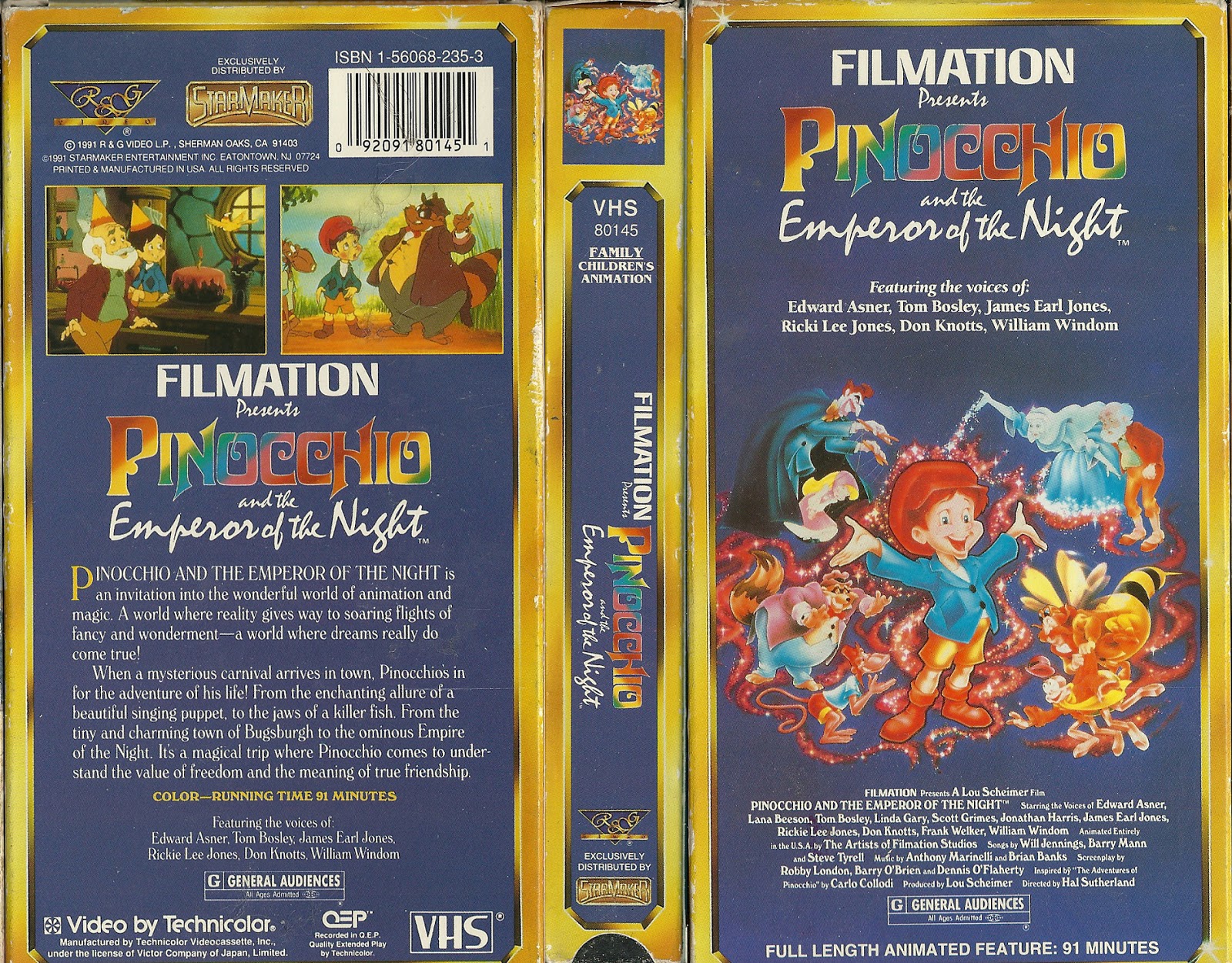










+(Snake+Curse)+(%E8%9B%87%E7%85%9E)+(CH.+Ratchapol,+Tailandia,+2002)+003.jpg)
+(Snake+Curse)+(%E8%9B%87%E7%85%9E)+(CH.+Ratchapol,+Tailandia,+2002)+002.jpg)




















































